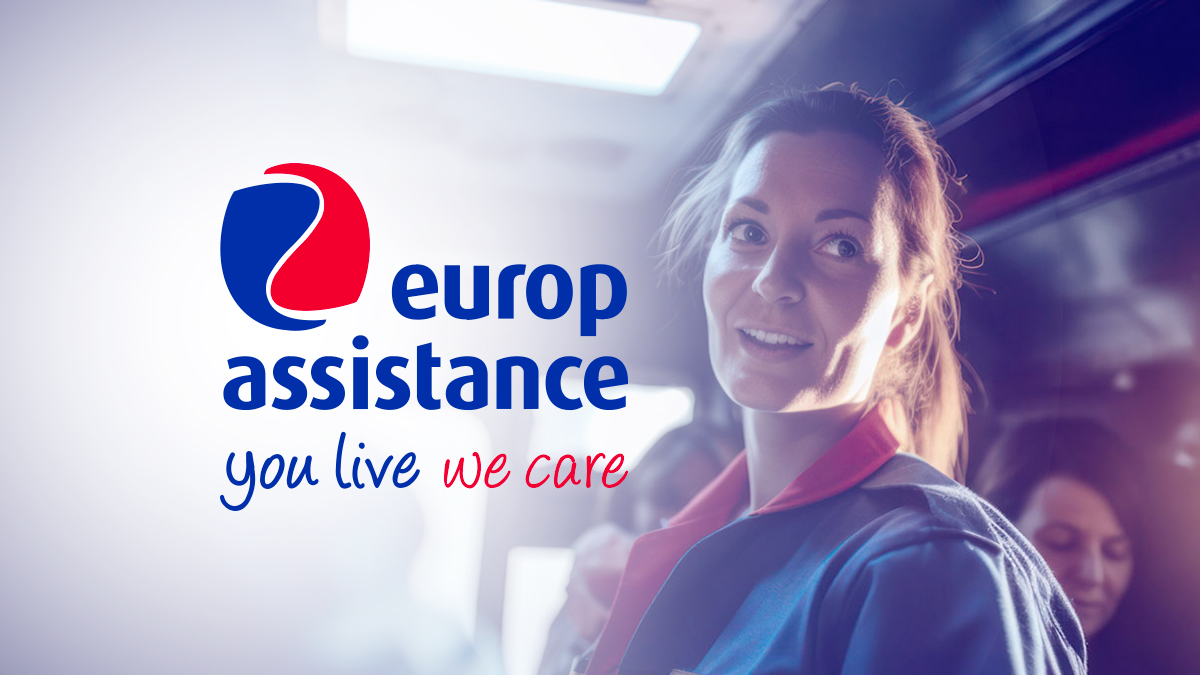Europ Assistance is issuing the following medical advice
In order to support readers of this notice, we have highlighted (in bold) the changes from the last edition February 13th 2020.
TODAY’S UPDATED MEDICAL INFORMATION AND ACTION RECOMMENDATIONS REGARDING THE COVID 19 / NOVEL CORONAVIRUS EPIDEMIC STARTED IN WUHAN, CHINA
February 17th 2020, 14H00 Paris time – Dr M. Kalina, EA Group Medical Director
The purpose of this bulletin is to provide all the entities of Europ Assistance, GEB and GGH, and all their clients, with a current summary and analysis of information available both in general media and especially from Chinese and international scientific sources regarding the coronavirus outbreak in and disseminated from Wuhan to other Chinese cities, as well as to foreign countries, and to make specific recommendations for each of the client groups, national travelers, expatriates in the targeted areas, and international travelers, both corporate and leisure.
This outbreak started officially December 31st in a live animal and fish market in Wuhan and is thought to originate from the Chinese horseshoe bat. It initially caused relatively few cases, was managed with energetic isolation measures, and showed no evidence of human to human contagion. Recommendations were therefore limited to avoiding contacts with animals and patients, and no travel restrictions were advised by either Chinese or international authorities. A significant deterioration of the situation was reported by the media over the January 18th weekend and confirmed the following week by the Chinese authorities, including the transmission, probably through droplets, between human beings. It has since been very present in all media. The disease is highly contagious but appears less severe than SARS at this stage although the proportion of severe cases seems to be increasing. Deaths occur mostly in older people with underlying diseases. The symptoms to watch for are first of all contact with a proven or potential case, then respiratory symptoms like cough and dyspnea/shortness of breath, and feeling sick. Fever is often but not always present. The incubation is usually 3 to 7 days, rare cases are transmitted from symptom free patients, and the maximum is currently thought to be 14 days although there may be cases exceeding this length.
The World Health Organization (WHO) has regularly congratulated the Chinese authorities for their efforts in the fight against this outbreak and its contribution to research. It declared a Public Health Emergency of International Concern in late January in view of the growth in the numbers and the restrictions applied by China and many countries. It supported the Chinese initiatives but strongly argued against the global spread of any measure to restrict travel as economically unsound. This remained the WHO’s core concern in their February 4thand 6th communication, focusing on the need for prevention, isolation and appropriate handling of cases and contacts. The WHO cooperates with IATA to standardize precautions onboard airlines. On February 11th 2020 to be coherent with international virus and disease naming rules the International Committee on the Taxonomy of Viruses renamed the virus SARS-CoV-2 and the WHO named the disease COVID-19. Their last situation report February 16th shares the latest data and methodology recommendations and still focuses on recommending prevention measures for individuals but avoids any travel restrictions.
The Center for Disease Control (CDC) also published a document on the 23rd of January. They consider the public health threat serious but state it is too early to predict the evolution. They strongly recommend to avoid travelling to China unless one has a critical reason to go. Most foreign cases did originate from Wuhan initially but transmission of the virus outside of China has started occurring. The CDC stated that given the release of the full genome of the “2019-nCoV” they have the tools required for case detection. They have begun entry screening of passengers coming from China to the main airports of entry in the US. Their focus is on the use of proper prevention measures. The CDC also produces specialized advice for the likes of businesses or ships. Their latest communication February 16th mentions the expectation that more cases may occur, including in the USA where they recommend general flu prevention measures including vaccination They also underline the need for specific attention to any care seeker with a history of travel to China or close contacts with travelers to China.
Elective but not systematic 14 days isolation is practiced on arrival except on cases repatriated by many countries. This type of screening was extended to other arrival points and also undertaken under a variety of formulas by many countries.
Europ Assistance did through its local medical and operational team at Europ Assistance China become aware of the current situation as reported by the Chinese authorities, has monitored the situation from the onset and is regularly getting accurate information this way. EA’s internal operational procedure is to always ensure that when an entity has a case it contacts the entity or the agent in the affected country in order to clinically manage the case in a way compatible with the local public health rules for diagnosis and treatment of COVID-19. Reports from several national public health authorities and academic centers are also monitored.
At this stage the latest modified data available, as of 14H00 February 17th China time, the total volume of confirmed cases in China was 70639 (71337 globally), 10644 of the cases in China were critical, and 1775 deaths had occurred (1696 of them still in Hubei province, 3 outside China). There are 7264 suspicious cases, and 678 cases have been identified abroad (257 in Asia, 335 on a cruise ship offshore Japan, 47 in Europe, 23 in North America and 15 in Australia).
For expatriates in Wuhan, in Hubei and now in the rest of China there is no special regulation scheduled for foreign patients who need to be medically assessed for respiratory symptoms with fever. If they have symptoms, they have to follow the public system at this stage. Some international / VIP clinics in China might refuse to accept consultation with suspicious cases and their resources are limited under the current threatening environment. There are 9 designated hospitals in Wuhan for fever patient consultations, but the government plans to open more hospitals and beds for patient accommodation. They have actually built and inaugurated a brand new prefabricated hospital of a 1000 beds to meet the demand. So far there is a significant shortage of ward beds for admission of patients. Facilities such as hotels have been requisitioned to increase the ability to isolated cases. Our recommendation is that our platforms involve our Chinese colleagues if a client needs medical attention in any region of China. If people wish to travel out of the country they ought not to show any symptoms and should not have been in direct contact with Novel Coronavirus patients due to international aviation medicine rules.
Europ Assistance Recommendations
In these circumstances Europ Assistance recommended, taking into account the unavoidable increase of in-country travel during the Chinese New Year festivities, to first and foremost avoid any contact with patients with Wuhan flu, and more generally with patients with cough and fever. This is also recommended to national clients. Of course the usual hygiene precautions should remain a priority considering that regular handwashing, disinfection and adequate use of mask wearing, especially in public transports and crowded places, are part of these essential hygienic attitudes. In addition for expatriate patients planning to remain in the country one would suggest to avoid exposure to mass transport, visits to hospitals and clinics, as well as to markets with live fish and animals.
Clients in the isolated zone of Wuhan cannot travel unless they are involved in government authorized evacuations, outside of the scope of Europ Assistance. There is no necessity to leave the country as long as prevention measures are adhered to but it may make the concerned individuals feel more at ease. There are medical evacuation schemes in place, but these are voluntary and organized by national authorities not private concerns. Any decision to travel out of the country, in anticipation of potentially broadened isolations or hard to apply safety measures remains a personal choice and not a medical evacuation. Should people arrive from China to their country of destination they should declare any symptoms of fever or cough having appeared during the flight to the airline and airport staff. They should remain isolated for the 14 days after arrival and report symptoms to the designated institution by phone and follow instructions and not go to health care providers or emergency rooms. For those outside China planning to travel back there may be charter flights organized by the Chinese authorities if they are Chinese citizens. For expatriates wishing to travel back and for travelers the individual decision should take into account the measures in place in China, the travel restrictions issued by several governments, and the fact that many airlines have temporarily suspended flights. Clearly any travel undertaken have formal restrictions were announced could be challenged cover wise. For non-essential travel to China the sensible individual decision may be to delay travel for several days until the information regarding this epidemic is more reliable. These considerations concern only China as there are no medical reasons to restrict travel anywhere in Asia or the world because of the Novel Coronavirus epidemic.
Our internal procedures are until further advise to ensure negative test for “2019-nCoV” has been carried out for any EA patient with respiratory disease, who travels by air (air ambulance or commercial carrier) from China to any other country. Patients isolated in the Wuhan area are asked to call Europ Assistance and the Chinese platform will direct them to the appropriate consultation facility. Should a patient be diagnosed with the new virus he or she will have to be treated in China as a general rule. However evacuation is now technically possible by air ambulance for both sick and contaminated cases as air ambulance capability has appeared on the market, using specialized equipment and trained staff. Clearly this must be authorized by a receiving country, usually the patient’s home country, and will remain an exception. As stated earlier EA as a group is ensuring that requests related to the Novel Corona virus epidemic will be referred by the entity the client is from to the entity or the agent in the country where the request originates to optimize the response and ensure it is in conformity with national rules and processes.
EA China has put in place a very rigorous system of monitoring daily the condition of its employees, and ensuring that our operations can be optimized from where the people live. This model will be used on other platforms as well hoping that as in Shanghai the result will be no contamination cases.
The current bulletin will be updated regularly until the situation stabilizes.





